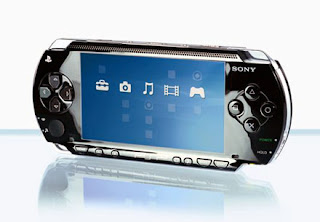 In many ways the PSP is starting to show its age. Even with numerous redesigns, it seems to be losing ground to the competition, as handheld gamers are ready to move on to the next thing --whether that "next thing" is touch control or 3D. But the PSP can still pull off tricks that just aren't possible on other devices. For example, Phantasy Star Portable 2 is a subscription-free MMO in the palm of your hand.
In many ways the PSP is starting to show its age. Even with numerous redesigns, it seems to be losing ground to the competition, as handheld gamers are ready to move on to the next thing --whether that "next thing" is touch control or 3D. But the PSP can still pull off tricks that just aren't possible on other devices. For example, Phantasy Star Portable 2 is a subscription-free MMO in the palm of your hand. Phantasy Star Portable is somewhat based off of Phantasy Star Universe from the consoles. Anyone familiar with the franchise will recognize the content immediately and gamers who played the first game on the PSP will remember that it had a number of notable problems. The presentation was lacking, and it didn't have an "infrastructure mode," meaning you couldn't play with others over the internet, only over the local wireless connection. Both of these issues have been addressed, making the sequel far more attractive.
Phantasy Star Portable 2
Players can decorate their room, upgrade weapons, trade for rare objects and converse with the locals who usually have something new to say. I found character management to be deep and rewarding, with plenty of ways to improve your skills and weapons. Playing as a Vanguard, I found Phantasy Star Portable's greatest strength to be its accommodation of players who can't make up their mind. Players can either change or extend their class at a shop using extend points. Your class dictates how many points it costs towards each weapon class. At any point you can remove points from one and put it toward another, if the item is outside your class it just costs more. Experimentation with different weapons kept me interested in grinding levels and collecting a whole new set of weapons for hours on end.
In fact, once you're in the swing of collecting items, the world hub it one of the most fun areas of the game. Whether you're decorating your room with found trinkets or trading items for that next level gun, the customization features will hold your attention.
When you're fully outfitted, you'll spend most of your time fighting through dungeons and the gameplay is just deep enough to keep each dungeon interesting. The useful "action pallet" from the first game is back and it quickly gives players access to their important items during combat. Players that time their basic attacks are far more deadly. And chaining basic attacks together before using a special photon attack results in a huge damage bonus. There are certainly gameplay differences between sabers, whips, and sniper rifles, but they aren't so different that varying classes will approach the game all that differently. I was tempted to try new weapons more out of curiosity, or a rare item pick-up, and it was plenty of fun to try out a new implement of destruction.
My only gripe with combat is with the lock-on feature. Simply tapping a shoulder button will lock players onto the nearest enemy or center the camera, while the second shoulder button brings up their alternate weapon. This setup works until you have a short range weapon and go up against a fast enemy. You'll need to constantly adjust the camera with the d-pad, or center it behind your character while trying to capture the right angle. This makes range an overly important weapon attribute, and it's a fundamentally frustrating control scheme that is difficult to avoid.
When it comes to your comrades, the party AI is functional; though it can't be relied on to get you out of a bind. Basically, if you can't handle a level on your own, don't put too much faith in your AI controlled teammates.
While the short cutscenes and beautifully drawn character art help to build interest in the story, visually, Phantasy Star Portable reaches beyond its means. There's a considerable amount of pop-in in the environments and some of the menu icons are just too small to make any sense. But what matters, the combat, is flashy and smooth even when playing online. My teammates would stutter on occasion, but my actions were always represented faithfully. The game isn't ugly, but it focuses on function over form and this decision plays to its credit.
I first jumped online when my character reached level 20 or so. I wasn't finished with the story yet, and my first multiplayer experience was with characters ranked far above me. It was fun to see how powerful these higher level characters had become, but it was ultimately pointless because I couldn't inflict a single point of damage against enemies in the dungeon we entered. There's a way to edit the search criteria to deal with this problem, but there were never that many people to choose from online, even later when I'd upped my level. I recommend having at least one friend who can join you in the adventure if you plan to spend a lot of time online.
Finally, Phantasy Star Portable does plenty to accommodate players with in-game options and adjustments. You can check on the many metrics of your character's progress, adjust tons of minor presentation details, and there are plenty of quick ways to communicate through text and character animations online. Missions are rated by length, difficulty, and reward, allowing you to pick the bite-sized challenges when you're on the go. It seems the details are all in order.





